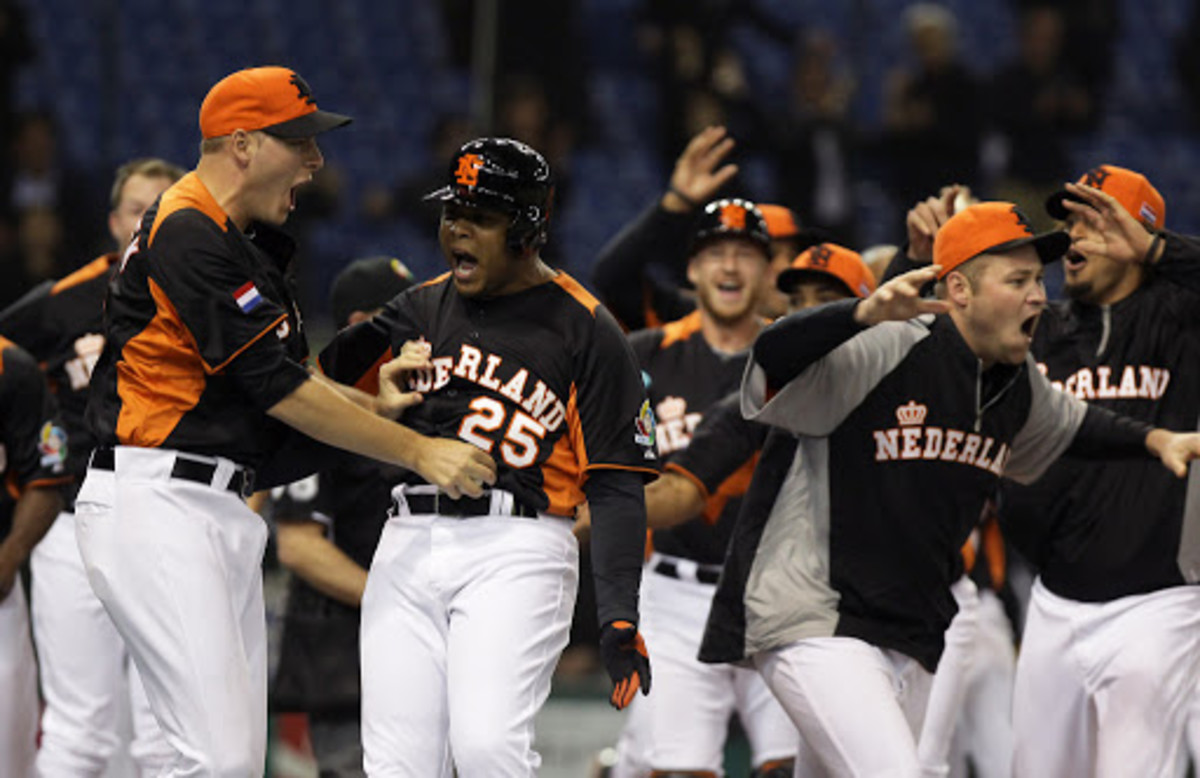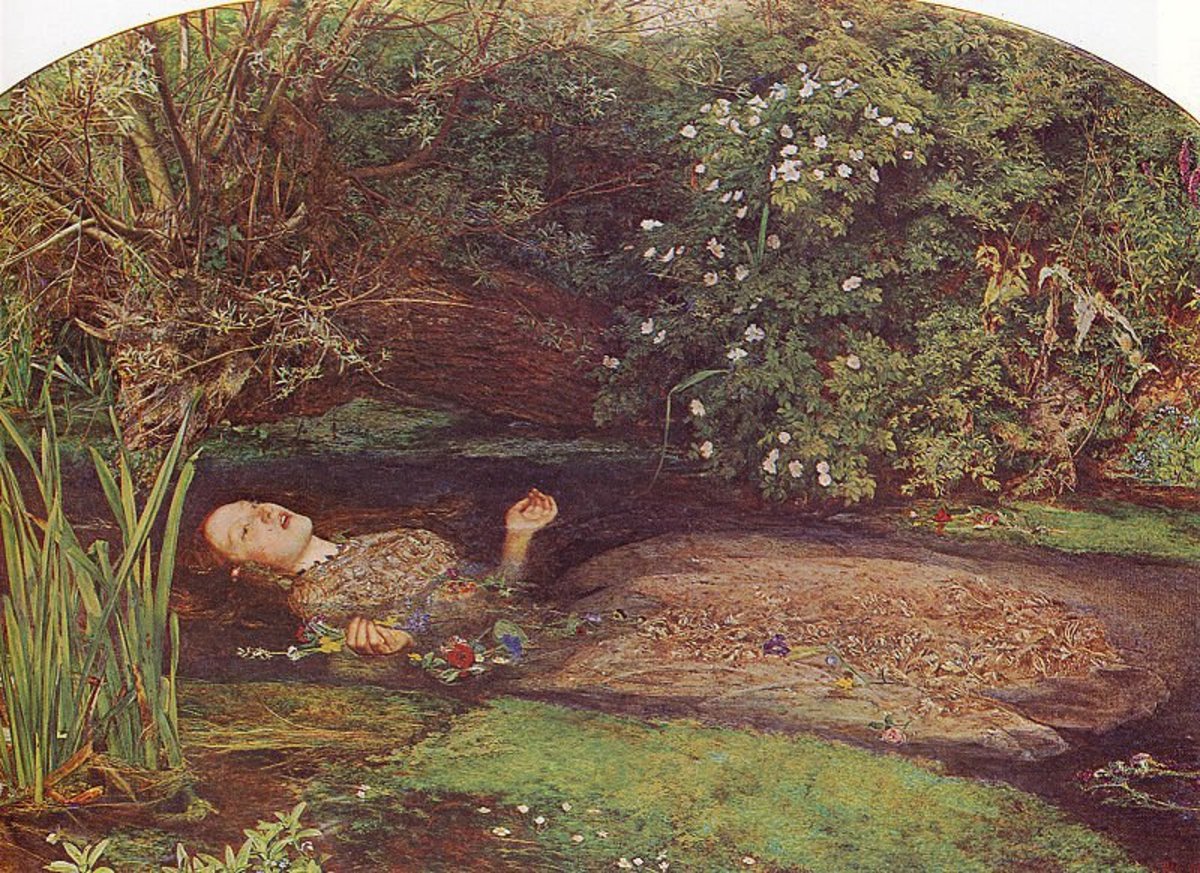Baroque: Realms of Light - Italy and Austria vs. Spain and the Netherlands
The Supper at Emmaus
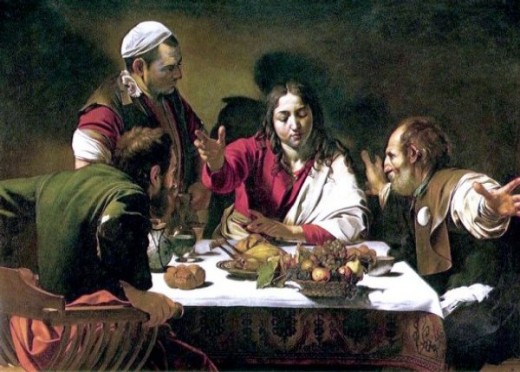
Conversion of St. Paul
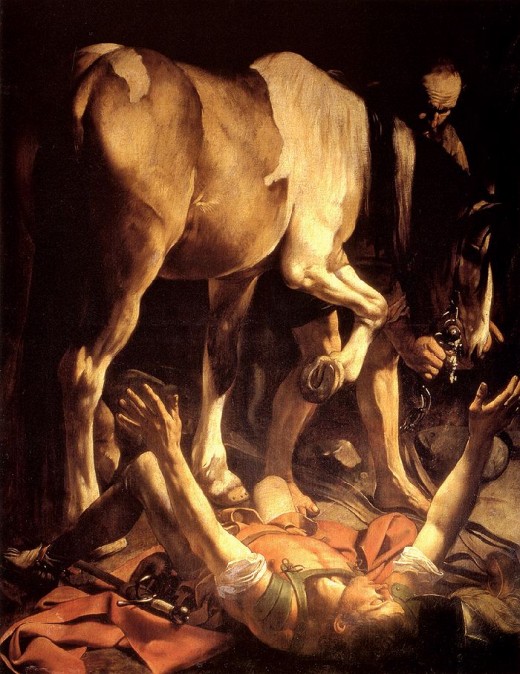
Descent from the Cross
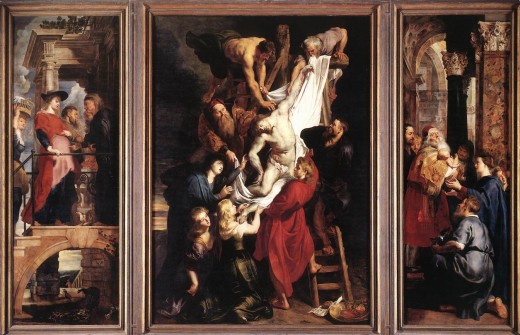
Las Meninas
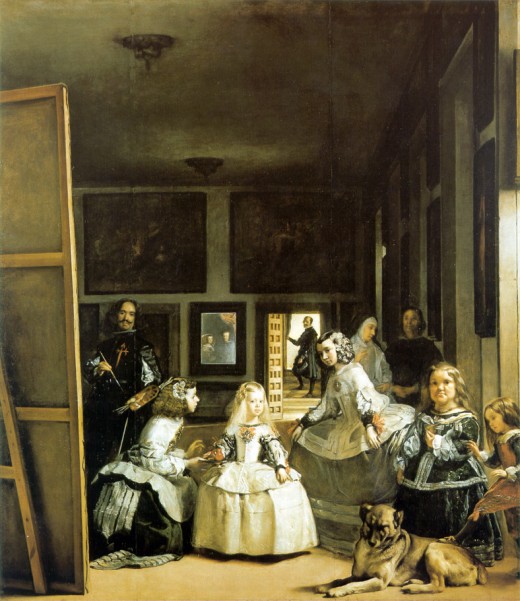
Realms of Light
The painting The Supper at Emmaus by Caravaggio, created in 1601, for Roman nobleman Ciriaco Mattei depicts the moment when the resurrected Jesus reveals himself to two of his disciples. The out-thrust left arm of the disciple startled and astonished viewers by breaking into the space in which we stand. The naturalism of the painting was unprecidented with the intention to convince viewers they are participants in an astonishing event: God's presence in the flesh. It was also to convince viewers that divinity and sanctity are found in our midst. Caravaggio rebelled against idealized depictions which displays his personality trait of being permanently against authority.
Conversion of St. Paul by Caravaggio, from 1600-1601, resides in the Santa Maria del Popolo church in Rome. It depicts the intrustion of the divine into human life as a real moment meant to be seen by the perspective of someone kneeling in prayer. The artist was pleading through pictures for man's direct knowledge of God. He used contrasting light and darkness to achieve his purpose; he rejected using a light source to portray a radient, divine figure. There is no visible light source, light appears suddenly and totally overwhelms Paul. The light itself is the presence of God and darkness is where God is not.
The painting Descent from the Cross was produced by Peter Paul Rubens from 1612-1614 as the altarpiece for the Cathedral for Our Lady. Rubens pulls out all the stops in religious paintings and serves as symbols for the Counter Reformation ideology: inspiring faith, inducing piety. Rubens shows the immediacy and individuality of the figures. The use of circling archs and sweeping compositions, and dazzling use of color all contribute to the heightened emotionalism intending to lift spectators out of their everyday worlds and into a state of exhaultation. His work in the most powerful expression of triumphant Christianity.
Las Meninas (The Maids of Honor) by Diego Velazquez in 1656 leaves the viewer challenged with six pairs of gazes creating a distinctly unsettling effect. The viewer is torn between feeling like an unwanted presence but also unable to leave, compeled to discover what is happening. This artwork is possibly a glimpse into the artist's daily excitement of making portraits for the royal family. Velazquez uses blotching technique on fabrics to best show off the royalty and decrease the visibly distinct inbreeding traits. Painting takes place in his studio and his presence stakes a claim on his high social status and gentlemanly stature. The true subject of the painting is painting itself and not the princess so prominent in front. This shows Velazquez's entire box of tricks: illusions of space, depth and perspective, but he holds back the means in which he accomplishes those illusions, which he teases and provokes by multiplying the uncertainties.
Triumph of Barberini
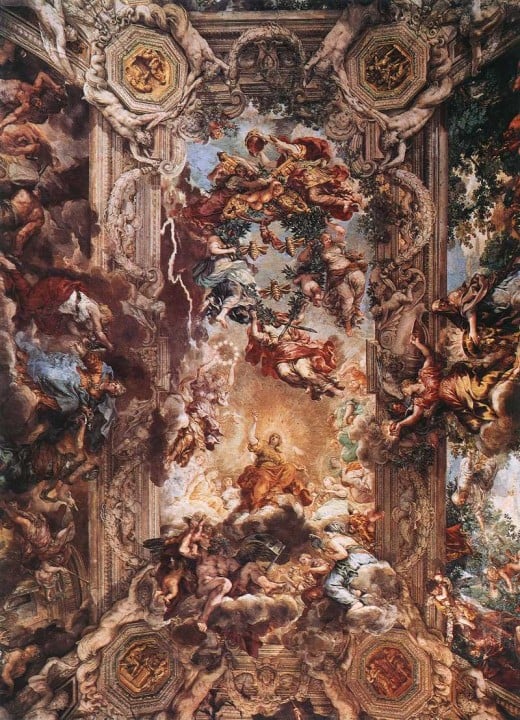
Amsterdam Town Hall
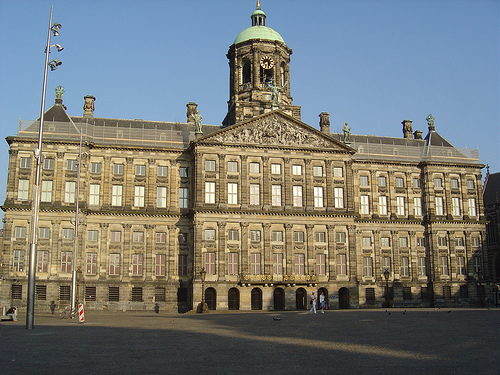
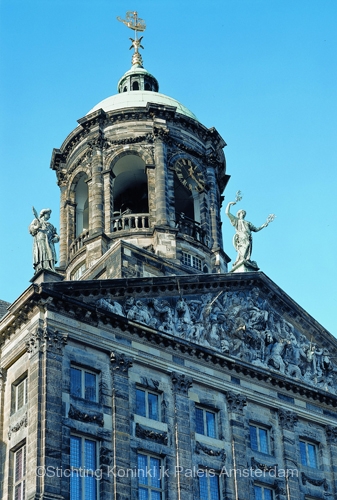
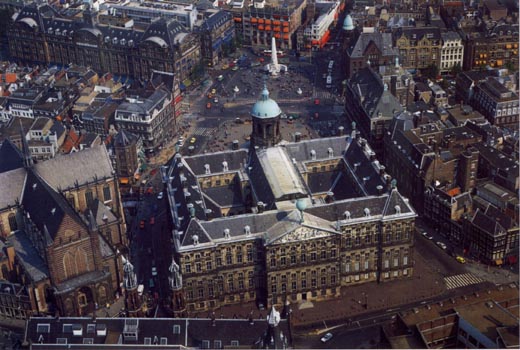
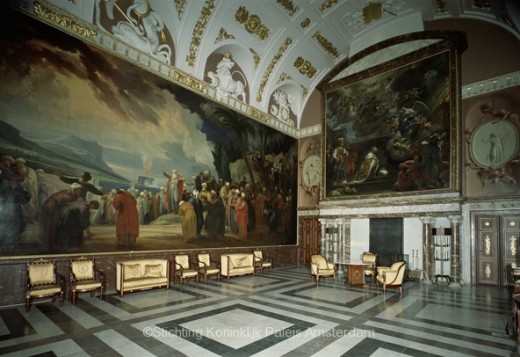
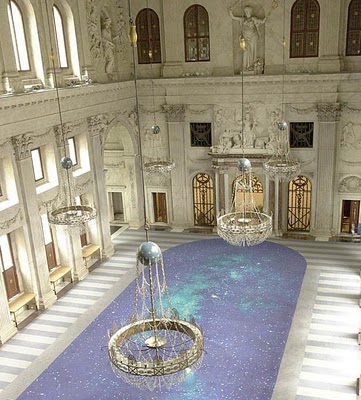
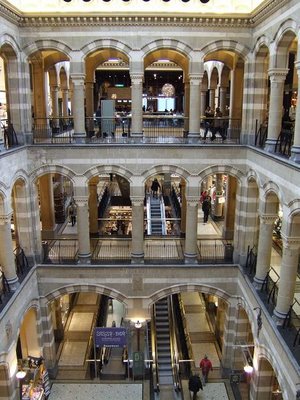
Triumph of Barberini vs. Amsterdam Town Hall
The fresco Triumph of Barberini on the ceiling of Palazzo Barberini in Rome, created by Pietro da Cortona from 1633-1639 will be compared and contrasted with Amsterdam Town Hall (now know as the Royal Palace of Amsterdam ) by Jacob van Campen from 1648-1655 in Amsterdam, Netherlands. The areas of comparison include technique, political content, and the philosophical statement of the artist for each piece. Cortona used a careful and well thought design based on a written plan. The figure of Divine Providence directs the figure of Immortality to bestow eternal life on the Barberini family. Her arms stretch toward a chorus of maidens carrying the emblem of the family, the Barberini bees, toward the crossed keys of St. Peter and the papal crown, symbolizing not only their ability to rule the papalcy but their duty given to them by God Himself. Scenes painted around the sides of the ceiling tell stories extolling the Pope's virtues. Athena destroying insolence and pride in the shape of giants symbolizes his battle against heresay. The depiction of the Satires displays the Pope's piety conquers lust and intemperance. Cortona uses the vocabulary of classical antiquity but draws the figures naturalistically with lifelike vigour and sensuality. The architectual elements are not real but painted as if they were. Cortona blurs the distinction between real and illusionary space suggesting hidden depths out of which the painted figures seem to come from. The overlapping layers of light and dark create a sensation of movement. The ceiling holds all elements of the high Baroque style: a clearly defined program, the dynamic and dramatic tension between naturalism and classicism, the tension between illusion and reality, between light and dark, and movement. The concept of movement comes from Nicholas Copernicus' published work of heavenly bodies which challenged people's perception of themselves by claiming the earth was not the center of the universe. Another influence of movement was the discovery of the Americas and the exploration of the Far East, revealing Europe was not the center of the world. This work of art states Pope Urban VIII was a great and worthy man but the ideals of the classical world haven been subordinated by the triumphant values of Christianity. Campen's Amsterdam Town Hall tells about the life and ideals of the Dutch Republic. Unlike the Baroque of Italy and Austria, the Netherlands Baroque style has no qualities of absolutist architecture and closely resembles the classical style. Rather the architecture shows the recent developments in their nation's history; after gaining independence from Spain, the Dutch established a predominantly Protestant Republic. Their shift away from monarch rule is shown in the seven simple unpretentious doorways, and embodies independence and political aspirations. This structure proclaims the superiority of the free city at the center of the world. The outside is made from a yellow sandstone and the interior of marble. The windows were strategically placed to watch the ships come and go from the harbour since the sea was main influence that helped shape Dutch society.
Belvedere Palace
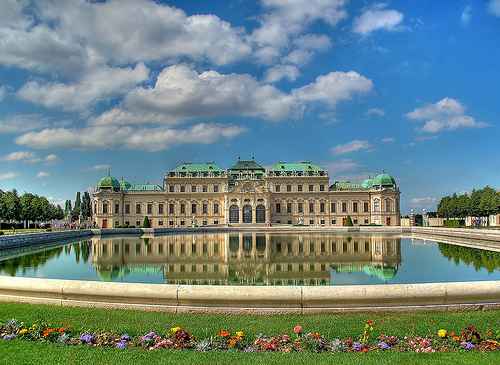
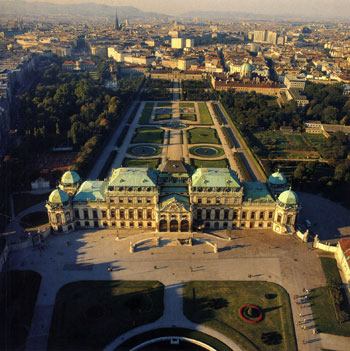
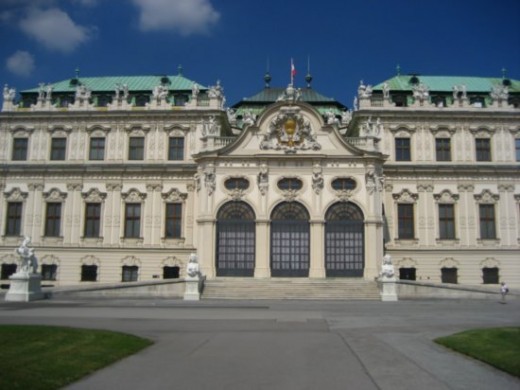
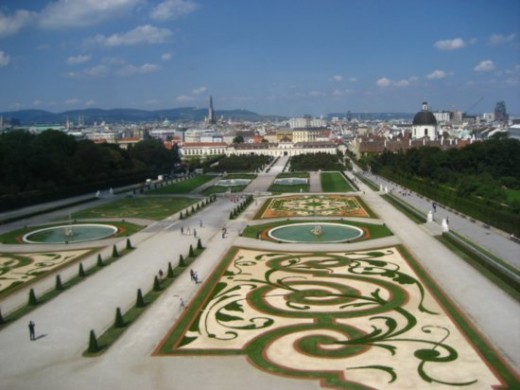
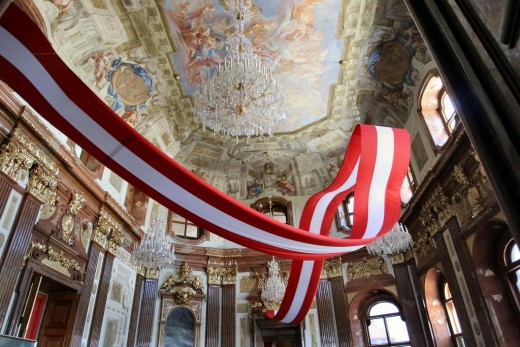
The Company of Captain Frans Banning Cocq
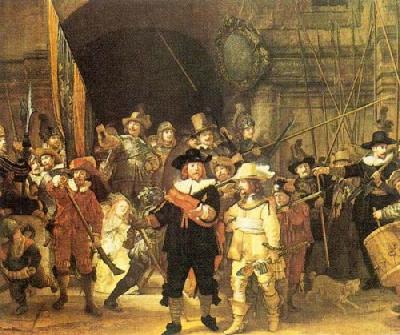
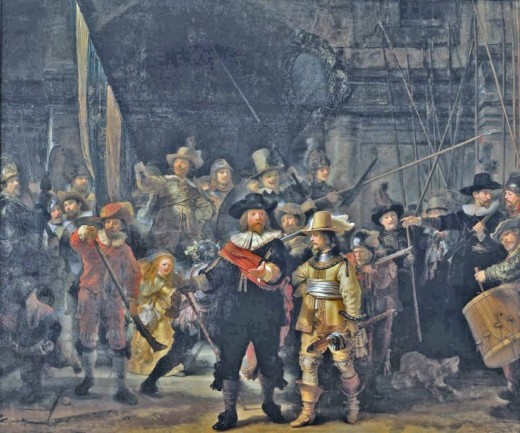
Belvedere Palace vs. The Company of Captain Frans Banning Cocq
Belvedere Palace in Vienna, constructed by Von Hildebrandt from 1697-1723 for Prince Eugene of Savoy who led the Austrians in victory over the Turks will be compared and contrasted with The Company of Captain Frans Banning Cocq (more commonly recognized as Night Watch) commissioned by Rembrandt van Rijn in 1642 for Captain Frans Banning Cocq and his lieutenant Willem van Ruytenburch along with sixteen members of the militia group. The areas of comparison include style, technique, and the artist's personal reflection of each piece. Belvedere Palace consisted of a upper and lower Belvedere, set at opposite ends of an enormous formal garden in which nature has been completely subdued. At one end, where the Prince lived in the lower Belvedere, represents the earth while at the other end, where visitors were received in the upper Belvedere, represents the heavens. Hildebrandt depicts the journey from lower to upper Belvedere through the gardens to reflect man's journey through life. The path appears to be straight from end to end but the grand staircase is a cascade, forcing participants to go left or right. The garden forces people to be a player in an allegory of the human journey to eternity. The upper palace faces north so the facade is always in shadow like the Heaven it represents; its features are unreadable until you are very close. Upon arrival in upper Belvedere, we are reminded that we may struggle like Hercules to stay on the right path. The grand staircase brings us to the hall of the emperor, the final destination. Rembrandt depicted the excitement and frantic activity of a company of militia soldiers in Night Watch. He amplified the complexity and energy with an intense and purposeful expression of the group mentality. Drama sums up the essence of Rembrandt's style of artwork. His use of light is at an extreme opposite from Vermeers. While Vermeer floods his figures with even and serene radiance so they sparkled with the intensity of an image caught by a lens, Rembrandt turns the lights down low, plunging works into theatrical darkness to better use a spotlight for dramatic emphasis and brilliance. The intense darkness of the painting today is due to the effect of the aging varnish rather than the artist's original depiction of the subjects. He scooped out hollows of recessed space at the back and front of the painting, giving Rembrandt the freedom to deploy troops with animation. The outstretched hand and spear give image a sense of propulsion out of the painting toward the viewer. This chaotic representation of the company in the act of organizing itself corresponds with the Dutch self-image of making order out of disorder and the war-like valience embodied by the soldiers. It is not only a group portrait but a history painting, testifying to the rambunctiousness of the plain citizenry. There is a wild riot of energy, movement, and noise exploding out from the center of the painting. Rembrandt's portraits go beyond the rendering of facial features and social status by reading into the personal and private history, and psychological characteristics of the individual.
Feast of Bacchus
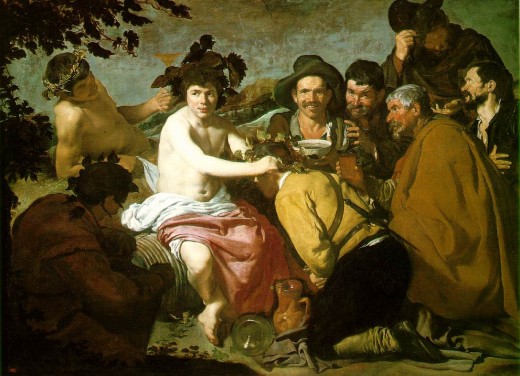
Feast of Bacchus
Feast of Bacchus (also know as The Drunkards) by Diego Velazquez from 1628-1629 portrays the ancient god Bacchus, god of wine and provider of joy, getting drunk with a group of Spanish peasants. Ironically Velazquez depicts a figure of classical antiquity in the naturalistic style of the Baroque. The naturalistic twist was influenced by studying Caravaggio's paintings. Velazquez fused the real and mythological to create a new psychologically penetrating reality. Alcohol was and is a beloved rescue for the common man and Bacchus was considered to brighten the lives of ordinary people. He was also considered to be the closest god to mankind. This ritual of meeting with friends and partaking of alcohol has been passed down from the generations and still continues to this day. It portrays that some social pastimes in the 17th century are still acceptable in today society.


